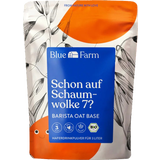The Barefoot Running Trend
Barefoot running has become more and more popular in recent years. Paradoxically, however, the market has also developed special shoes to mimic this experience. We often hear this trend is full of risks, but is it?
It was the sensation of the Olympic Games in Rome in 1960: the Ethiopian Abebe Bikila won the marathon - barefoot! The story goes that Bikila's running shoes were worn through and couldn't be used anymore. Finding no suitable replacement, he simply ran without shoes and won with a world record.
Today, over 55 years later, Bikila serves as a much-cited example of the new trend of barefoot running. It's pretty exciting that this trend has been around for millennia!
Is barefoot running "better"?
In fact, many studies have demonstrated that man is faster without shoes. Our feet do what they do best when they get out of constricting footwear.
Feet: a complex system
That feet are complex is not really surprising, since each foot is an evolutionary masterpiece. Each foot has 28 bones, 33 joints and countless muscles that form a complex dynamic system that provides for natural attenuation (rolling) and rigidity while running (your footprint) by alternating between looseness and tightness.
Foot deformities on the rise
Since we constantly wear shoes, our muscles, tendons and ligaments are no longer fully trained, making them regress. Deformations such as low arches or broad feet are the result. These deformations could be counteracted by not wearing shoes.
Barefoot advantage
Besides fortified foot muscles and stable joints, walking barefoot also stimulates the internal organs via reflex arcs and interconnections. It regulates blood pressure, relieves the spine and even benefits the immune system and the cardiovascular system.
Specially developed shoes
Today avid runners can choose from a wide selection of barefoot shoes. The challenge in the development was protecting the feet from dirt, etc., but at the same time not falsifying the barefoot experience. The solution was the omission of the midsole.
A conventional running shoe has three tasks: dampen, support and guide. Without midsoles, feet need to pick up the slack. Much lighter and thinner materials have been removed, damping the leadership qualities of these shoes. They are what gloves are for hands. They provide some protection, and allow the hands to move but not freely. There are many models including toe shoes or normal-looking shoes to decide on.
Barefoot running training - not for everyone
Nevertheless, barefoot running isn't for everyone. It can lead to injuries. Therefore, many runners are uncertain about giving it a try. The question is not whether to run barefoot, but how and how often you should walk barefoot. The running style is different in barefoot running. Shoes are like a ramp. The heel is increased, whereby it always touches the floor first. Without shoes always sets the front or midfoot lands first. The modern person is accustomed to shoes, so walking barefoot can be exhausting. Until the body adjusts to the change. Barefoot shoes should therefore only be used in addition to normal training and not as a substitute. After one or two years you may finally be able to completely switch. If you want to. Also learn the correct running style with a barefoot shoes! It makes a difference. Take care with how you run, and you'll have fun - with or without shoes.
Latest reviews
-
 4.9 (8)
4.9 (8)3 Chênes Laboratoires Saframyl, 15 tablets
- Standardized Safranal
- With vitamin B6 and L-tryptophan
£12.20 (£1,626.67 / kg)Delivery by December 23
-
 4.2 (5)
4.2 (5)Blue Farm Organic Barista Oat Base, 300 g
- 100% plant-based & gluten-free
- No added sugar*
- NO unnecessary additives
£7.05 (£23.50 / kg)Delivery by December 23
-
 5.0 (2)
5.0 (2)Blue Farm Organic Chai Oat Latte, 300 g
- With cinnamon, ginger & cardamom
- Caffeine-free
- Free from additives
£12.20 (£40.67 / kg)Delivery by December 23
-
 4.7 (3)
4.7 (3)Blue Farm Organic Matcha Oat Latte, 300 g
- High-quality organic matcha
- With Lion's Mane vital mushroom
- Without additives
£12.20 (£40.67 / kg)Delivery by December 23
Magazine Articles:
Discover VitalAbo :
-
Great Britain: Free standard delivery from £69.90
-
Free
returns -
We operate in a
climate-conscious manner. More than 8.650 products
